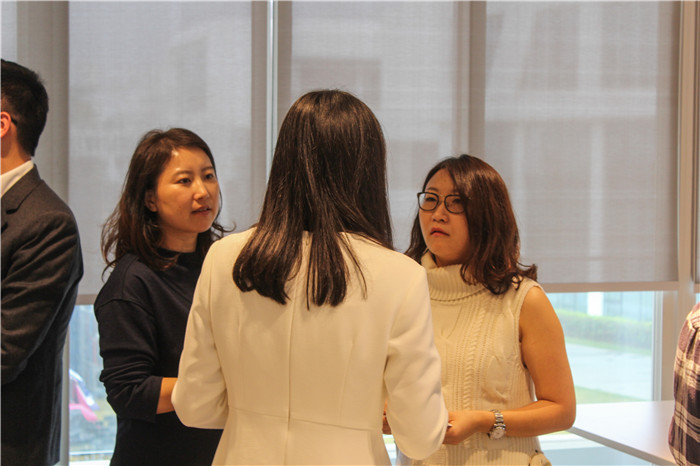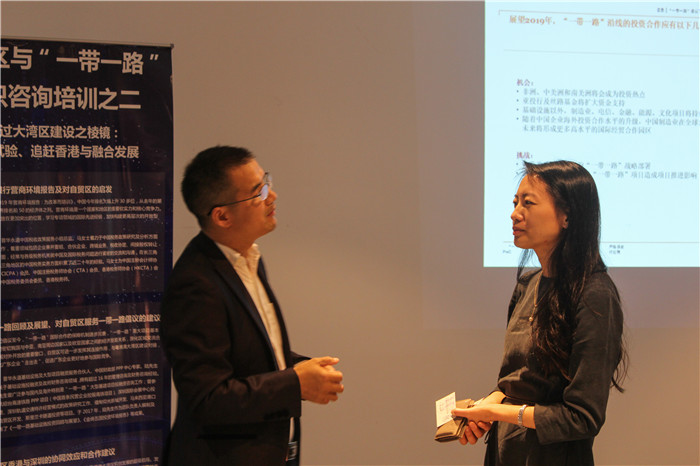Consulting Seminar on Free Trade Zone and the “Belt and Road” (II)
On 7 December, the Consulting Seminar on Free Trade Zone and the “Belt and Road” (II), which was hosted by Qianhai Shenzhen-Hong Kong Modern Service Industry Cooperation Zone of Shenzhen (the Qianhai Authority), organized by Roadlink GLB, and co-supported by Shenzhen Outbound Alliance (SOA) and Statistical Society for Foreign Economic Relations and Trade of Shenzhen, was held at the Qianhai Shenzhen-Hong Kong Youth Innovation and Entrepreneur Hub. A number of experts were invited to interpret the policies, provide related information and carry out professional training for the participants.
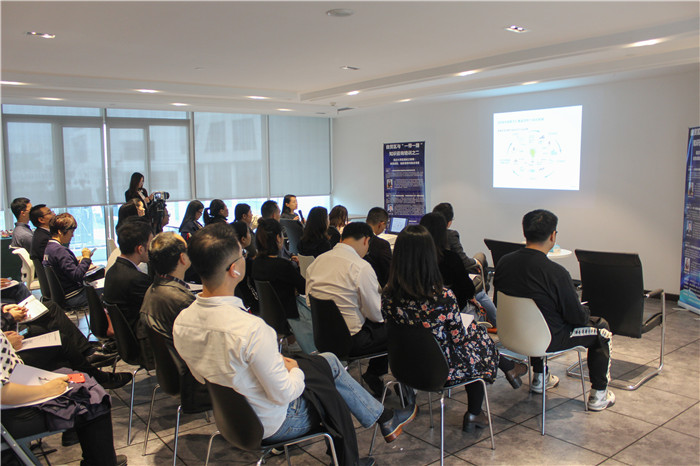
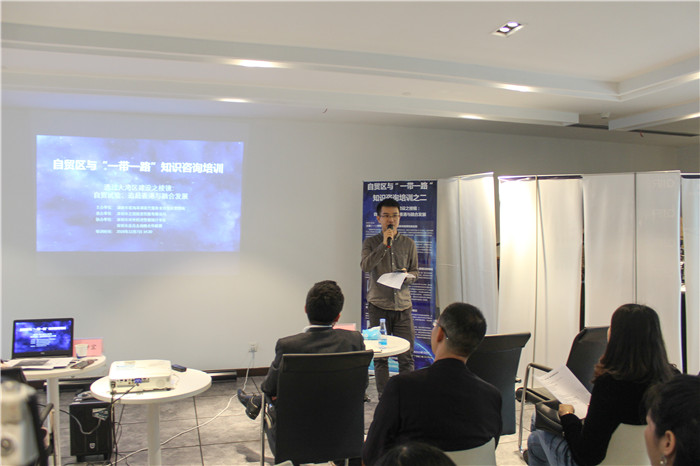
The host was giving an introduction on the training session
Before the seminar started, the host, Li Liuxing, a Staff Member of the Free Trade Coordination Division of the Qianhai Authority, briefly introduced this Training. Since President Xi Jinping proposed the “Belt and Road”, it becomes a critical issue for all companies to effectively and positively respond to this Initiative. Ma Ying, Director of China National Tax Policy Services of PwC, Lu Yao, Partner of Infrastructure and Large Project Financing of PwC and Expert of the PPP Center under Ministry of Finance, and Wang Shunyi, Partner of China Tax and Business Advisory of PwC were invited to provide training courses under the theme of “Looking Through the Prism of Greater Bay Area Construction: Pilot Free Trade Zone, Catch-up With Hong Kong and Integrative Development” for the participants.
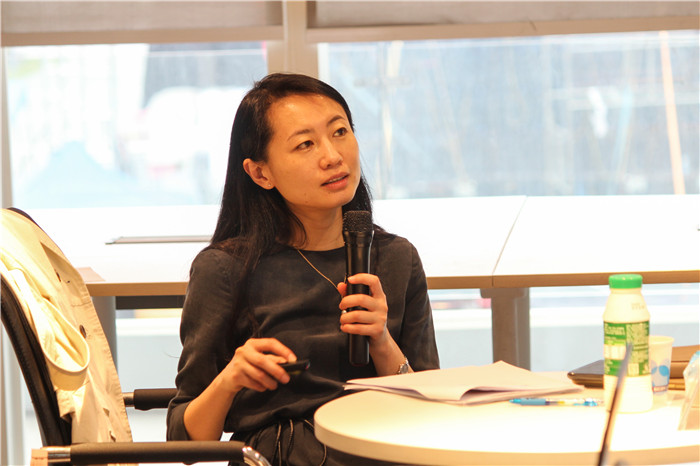
Ma Ying, Director of China National Tax Policy Services of PwC, was sharing her views
Ma Ying, Lu Yao and Wang Shunyi respectively introduced the following three topics, i.e. the Doing Business Report issued by the World Bank and its inspiration to Free Trade Zone; Review and Outlook of the “Belt and Road”; and Recommendations Regarding the Role of Free Trade Zone Support to the Initiative and the Synergy and Suggestions of Cooperation between Hong Kong and Shenzhen within the Greater Bay Area.
Ma Ying pointed out that according to the report Doing Business 2019: Training for Reform issued by the Word Bank, China’s ranking rose sharply from 78th last year to 46th this year, up by more than 30 places to become one of the top 50 economies in the world. As the business environment is a key component of the soft power and core competitiveness of a country and/or region, the construction of Free Trade Zone should prioritize the optimization of the business environment, learn from international advanced experience in special fields and accelerate the establishment of a new open economic system at a higher level.

Lu Yao, Partner of Infrastructure and Large Project Financing of PwC, was sharing his views
Lu Yao indicated that after General Secretary Xi Jinping proposed the Initiative in 2013, the safeguard mechanism for the international cooperation under the “Belt and Road” was improved gradually and basically all major projects under the Initiative were launched. The “Belt and Road” has played a significant role in deepening the regional exchanges and cooperation and strengthening the economic and trade relationship between China and its neighboring countries in Central and South Asia, as well as the relationship among countries in Europe and Asia. Given Guangdong’s role as an important window for China’s opening up, the Free Trade Zone could further leverage its connectivity characteristic to align with the construction of the Guangdong-Hong Kong-Macao Greater Bay Area, enhance the joint development effort of the “Belt and Road”, facilitate Guangdong companies on “Going Out”, and support these companies’ participation in international competition.
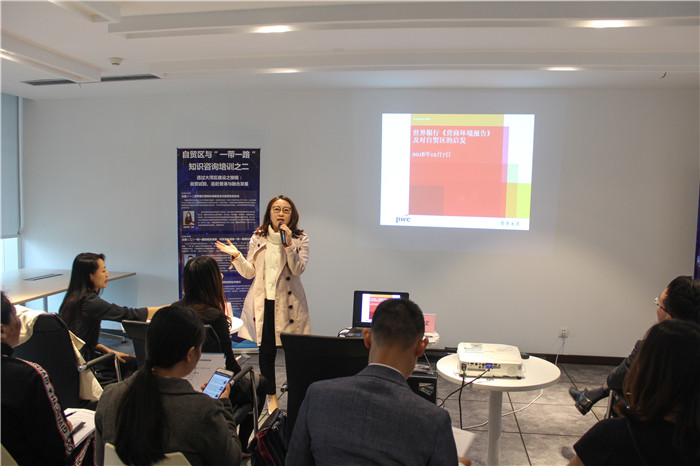
Wang Shunyi, Partner of China Tax and Business Advisory of PwC, was sharing her views
Wang Shunyi stated that with the respective geographical advantages, best-in-class science and technology institutions, and excellent talent resources, Hong Kong and Shenzhen have become the super engines for the technical innovation development of the Guangdong-Hong Kong-Macao Greater Bay Area. Thus the Greater Bay Area should be developed by realizing the synergies of Hong Kong and Shenzhen, improving the efficiency and inclusiveness of regional cooperation and enhancing the synergistic development capabilities driven by central cities and supported by the economic hinterland. Educational advancement and improvement of transport facilities should be the key of inclusiveness enhancement, while synergies from taxation policies, commodity trade, customs, social security and laws could generate significant growth potential.
During the Q&A session, Ma Ying, Wang Shunyi and Lu Yao, as well as the representatives of participant companies and the Qianhai Authority discussed about the issues regarding the practical corporate operations and different business tasks.
The training was carried out successfully and the training was well received by all participants, and many of them appreciated that the training enhanced their understanding of the Free Trade Zone and the “Belt and Road”. Participants expected more similar courses to be held in future to provide greater support to corporate development.
